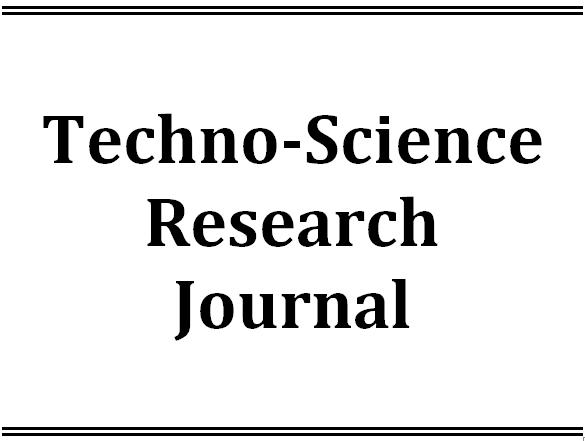Latest Issue
Empowering Education with Online Khmer Handwritten Text Recognition for Teaching and Learning Assistance
Published: August 30,2025Undergraduate Student Dropout Prediction with Class Balancing Techniques
Published: August 30,2025Status of Seawater Quality at Koh Rong Island, Sihanoukville, Cambodia
Published: August 30,2025Low-Complexity Detection of Primary Synchronization Signal for 5G New Radio Terrestrial Cellular System
Published: August 30,2025Word Spotting on Khmer Printed Documents
Published: August 30,2025Tuning Hyperparameters Learning Rate and Gamma in Gym Environment Inverted Pendulum
Published: August 30,2025Examining Passenger Loyalty in Phnom Penh Public Bus System: A Structural Equation Modelling Approach
Published: August 30,2025Prediction on Load model for future load profile of Electric Vehicle charging demand in Phnom Penh
Published: August 30,2025Economic Study on Integrating PV-DG with Grid-Tie: Case Study in Cambodia
Published: August 30,2025An Empirical Investigation of Gold Price Forecasting Using ARIMA Compare with LSTM Model
-
1. Department of Applied Mathematics and Statistics, Institute of Technology of Cambodia, Russian Federation Blvd., P.O. Box 86,
Phnom Penh, Cambodia
Academic Editor:
Received: April 29,2023 / Revised: / Accepted: July 13,2023 / Available online: December 31,2023
Time series forecasting is a well-established research domain, particularly in finance and econometrics, with a multitude of methods and algorithms proposed to achieve accurate future trend predictions. This study aims to examine the effectiveness of two popular models, ARIMA and LSTM, for predicting trends in gold prices in finance and econometrics. Monthly global gold prices from January 2010 to December 2022 are analyzed, with a training set from January 2010 to December 2020, a validation set of 12 months randomly selected from the training set, and a test set from January 2021 to December 2022. The results show that the LSTM model with a forget gate cell at 600 epochs yields the highest accuracy in term of RMSE, MAPE and SMAPE, surpassing all other models, including the ARIMA model. The study also suggests that increasing the number of epochs beyond 600 does not lead to significant improvements in the LSTM model's performance. While the ARIMA model is simpler to implement and requires less time for parameter tuning and training, it is less accurate than the LSTM model. Incorporating a peephole connection to the LSTM cell does not improve the model's accuracy or training speed. The study's outcomes provide valuable insights into optimal practices for gold price prediction, with implications for decision-making and risk management processes.

